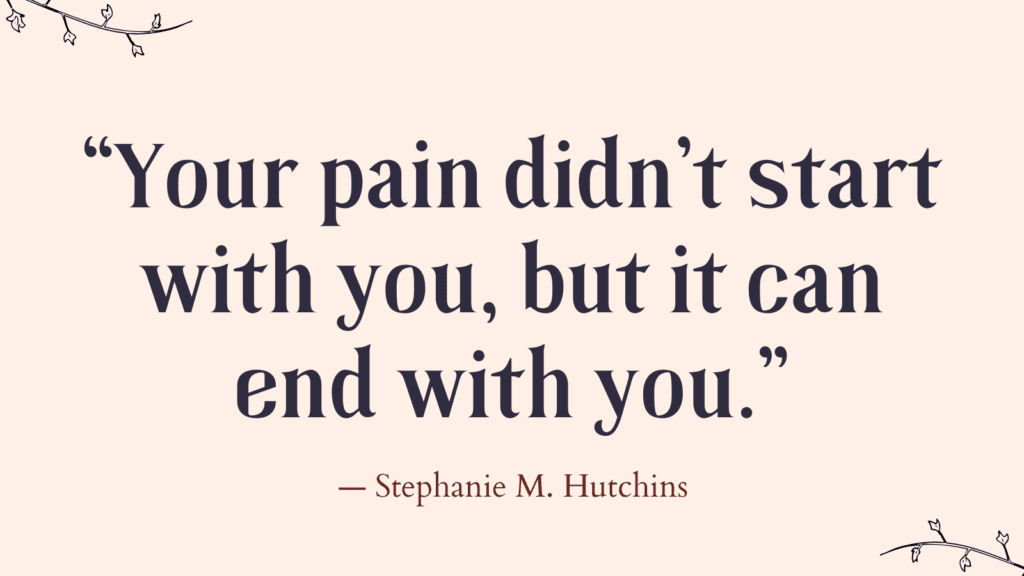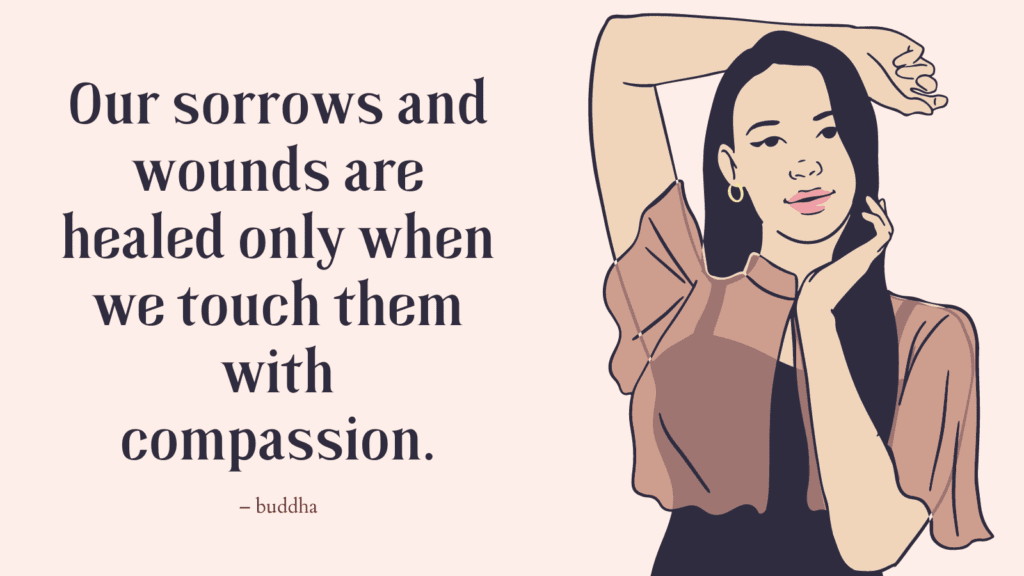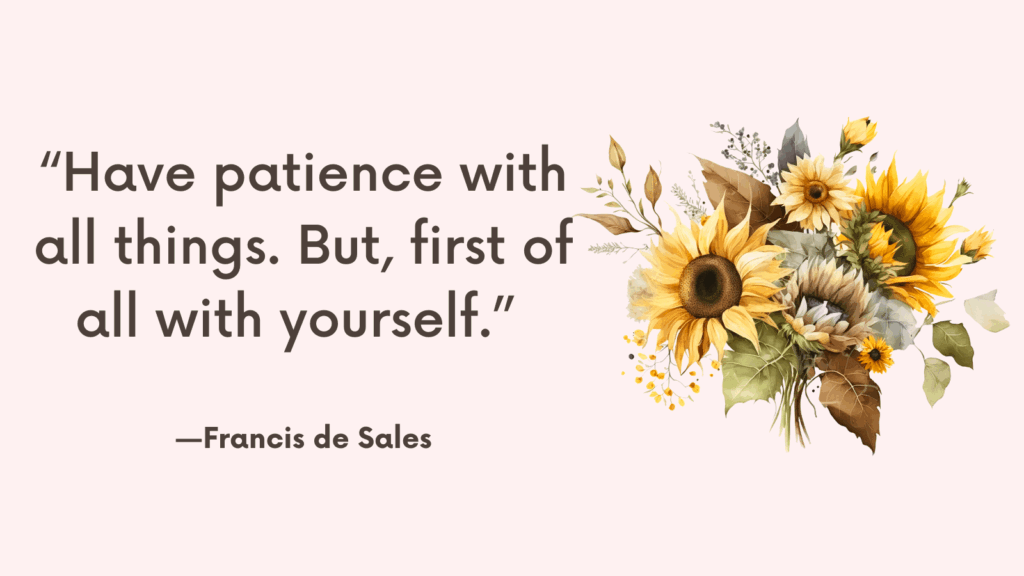How To heal Ancestral Trauma?
The short answer is: by making the unconscious, conscious.
Here’s why you need to do that and how to do it.
“Your pain didn’t start with you, but it can end with you.”
― Stephanie M. Hutchins
What Constitutes Trauma?
Therapist use:
(1) the term “Big T” to describe traumatic events, such as the death of a loved one, or abuse (physical, sexual, or emotional), a natural disaster, and
(2) the term “little t” trauma to describe traumatic events, such as a significant breakup, major surgery, being betrayed, living with a parent or partner who misuses substances, or experiencing several losses in a short period of time.
Some people may experience many “little t” traumas, while others may experience a combination of both.
It’s important to note that an event is considered traumatic based on the victim’s response: What’s traumatizing for some people, might not be as traumatizing for others.
Can You Inherit PTSD?
The latest scientific research is telling us today that the effects of trauma can be passed down from one generation to the next. (*) (*) (*)
This legacy of trauma has been referred to as ancestral trauma, inherited family trauma, or intergenerational trauma, or transgenerational trauma, or generational trauma. (*)
What Is Ancestral Trauma?
Ancestral trauma, also called generational trauma, is the psychological effects of a trauma that pass down from one generation to the next.
This trauma could be within one family or collective trauma experienced by a group of people or communities and carried as part of the group’s collective memory. (*)
For example, collective trauma was experienced by descendants of Jewish Holocaust survivors, Apartheid in South Africa, the Atlantic Slave Trade, the Colonization of African countries, the First Peoples of Canada, just to name a few.
Transmission During Pregnancy
Another major way that trauma can be transmitted across generations biologically is through pregnancy.
Exposure to high stress and harmful stimuli during pregnancy has been shown to can affect offspring’s physiology and psychology. (*)
Is Ancestral Trauma Genetic?
The pioneering cell biologist Bruce Lipton explains that the DNA can be affected by both negative and positive beliefs, and emotions. (*)
Dr. Lipton’s ideas and discoveries have since been corroborated by many researchers.
According to Rachel Yehuda, an Endowed Professor of Psychiatry and Neuroscience of Trauma, these changes in DNA biologically prepare us to cope with the traumas that our parents experienced and similar stressors.
Although this could be good news because we’re born withan “environmental resilience,” as Yehuda calls it, these inherited adaptations can also be detrimental.
For example, the child of a parent who lived in a war zone, might have a heightened startle response that keeps him in a highly reactive state even when there is no threat of danger.
How Does Ancestral Trauma Show Up In Families?
Traumatic Reenactment
Traumatic reenactment, or “repetition compulsion,” as Freud called it, is one way trauma manifests itself in our lives.
Repeating past patterns is the unconscious attempt to resolve what we couldn’t “get it right” the first time.
For example, a child of an alcoholic may find herself married to an alcoholic, too.
Or a child with a controlling mother, may become controlling himself so he won’t be controlled like he was growing up.
Traumatic reenactment could be one of the mechanisms at work in ancestral trauma.
In other words, unresolved, unconscious trauma will keep repeating itself until we bring it into the light of awareness.
Related: 14 Proven Exercises to Heal Your Inner Teenager and Wounded Inner Child
What Are Examples Of Ancestral Trauma?
- A family might seem emotionally numb
- Another family might have trust issues
- Some families might seem anxious and overly protective of their family members, even when there is no threat
- Other families might have unhealthy relationship boundaries
- Etc.
Symptoms of Ancestral Trauma
Symptoms of ancestral trauma begin with the survivor of a trauma, which tend to manifest as symptoms of PTSD.
This usually includes both emotional and physical reactions, such as:
- Anxiety and panic attacks,
- Trouble sleeping and nightmares,
- Feeling disconnected or confused,
- Experiencing intrusive thoughts and flashbacks,
- Withdrawing from others,
- Etc. (*)
Symptoms of trauma in the second generation can be experienced by
(1) a direct transmission from the interactions and relationships with their parents, or
(2) an indirect transmission
Children who are affected through direct transmission are more likely to lash out through their actions, and show:
- deviant behavior
- antisocial behavior,
- delinquency, (*)
Children who are affected through indirect transmission are more likely to suffer from hidden burdens: depression, anxiety, and guilt. (*)
I feel very strongly that I am under the influence of things or questions which were left incomplete and unanswered by my parents and grandparents and more distant ancestors. It often seems as if there were an impersonal karma within a family, which is passed on from parents to children. It has always seemed to me that I had to . . .complete, or perhaps continue, things which previous ages had left unfinished.
—Carl Jung, Memories, Dreams, Reflections
Healing Ancestral Trauma In 5 Practical Steps
Why Heal Ancestral Trauma?
It may seem easier to simply leave the past behind and focus on your life today.
However, as Carl Jung said, ‘Until you make the unconscious conscious, it will direct your life and you will call it fate.’
But unresolved trauma doesn’t just affect your life, it also negatively influence future generations.
Once we identify the trauma, its intensity and its influence on us begins to lose its charge and healing begins.
#1. Pay Attention To Your Core Language
In his book, It Didn’t Start With You, Mark Wolynn defines core language as the intense or urgent words we use to describe our deepest fears and the complaints we have about our relationships, our health, our work, and other life situations.
This core language can sound unusual and out of context from what we have experienced.
It could be debilitating fear or simply a great pain.
Our core language can also be expressed physically through inexplicable symptoms.
It’s important to pay close attention to the symptoms and behaviors that stand out as unusual.
Try This: Investigate Your Core Complaint
1. Identify a problem in your life right now that has been disrupting your well-being. It could be an overwhelming pain or a self-defeating behavior.
2. Write about the problem and how it affects you. Try asking yourself, “If the feeling or symptom I have never goes away, what would I be afraid could happen?”
Your core complaint may sound like:
- “I won’t deserve to live.”
- “I’ll be hated.”
- “I’ll do something terrible.”
- “I’ll go crazy.”
- “I’ll hurt my child.”
- “I’ll hurt someone.”
- “I’ll lose everything.”
- “I’ll lose my family.”
- “They’ll reject me.”
- “They’ll lock me up.”
#1. Identify Others’ Pain In Yourself
The following questions will help you identify if you’re unconsciously carrying someone else’s pain or trauma:
- Could you be feeling like, behaving like or carrying the grief and pain for someone who came before you?
- Do you experience symptoms, feelings, or behaviors that seem out of context compared to your life experience?
- Did someone in the family do something that caused their rejection?
- Was there a trauma in the family or an event that was too painful or shameful to talk about? (an early death of a parent, child, or sibling, a crime, suicide, etc.)

#3. Release The Trauma
Once you identify the trauma and to whom it actually belongs, allow yourself to release their pain.
Visualize your family member standing in front of you and have a conversation with them.
Tell them whatever you want. Tell them about their pain and how it affected you.
You can try to put yourself in their shoes and feel compassion for them for what they have been through.
Feel the weight of your pain dissipate as you imagine releasing the pain that didn’t belong to you.
#4. Create Personal Healing Affirmations
Sometimes the simple act of linking our pain to an unresolved trauma in our family is enough.
But sometimes, the awareness of what happened requires additional work to bring about a release.
Affirmations can help you reinforce the intention of releasing pain or trauma that doesn’t belong to you.
Releasing affirmations may sound like, “From now on, [insert person’s name], I will [insert the change you want]. In this way, I’ll honor you,” or, “Instead of reliving what happened to you, I will live my life fully.”
Use visualization where you imagine energetic link between you and the person that you release, and allow yourself to feel the relief.
Related: Trauma Release Exercises: Top 6 Practical Exercise to Support Healing After Trauma
#5. Talk to A Therapist
Therapy can be a safe space for you to experience the therapist’s unconditional acceptance of your own thoughts, feelings, and experiences.
This will help bring to light the, “Why do I do this?” behind the effects of ancestral trauma and help you start your healing journey.
Psychologist Locator and the National Register are two websites for locating psychologists in USA.
Online therapy is also an option. It can be much affordable than in-person therapy, but can be equally effective. (source)
Do You Have To Forgive Your Parents?
Studies show that the quality of our relationship with our parents can affect our health in later life. (*)
Maintaining a healthy relationship with your parents is a great source of emotional support.
However, this is not always possible, especially when the parent is toxic or abusive.
In any case, you should only forgive when you’re ready.
Related: Should We Forgive Others? 9-Step Guide To Free Yourself From The Past
Conclusion
Not every behavior we express actually originates from us.
Sometimes traumas and behaviors belong to family members who came before us.
By identifying ancestral trauma and making the unconscious, conscious, we can begin to heal and release what doesn’t belong to us.
Healing Trauma Worksheets

References
- Portions of this article were adapted from the book It Didn’t Start with You, © 2016 by Mark Wolynn. All rights reserved.
- What Is Intergenerational Trauma? (verywellmind.com)
- Transgenerational trauma – Wikipedia
- What Is Generational Trauma? Here’s How Experts Explain It (health.com)
- Intergenerational Trauma: What It Is and How to Heal (healthline.com)
- Inter-generational Trauma: 6 Ways It Affects Families | Office for Institutional Equity (duke.edu)
- GoodTherapy | Understanding Intergenerational Trauma: An Introduction for Clinicians
- Can the legacy of trauma be passed down the generations? – BBC Future
- Intergenerational Trauma: Epigenetics and Inherited Emotional Stress (verywellhealth.com)
- The legacy of trauma (apa.org)



